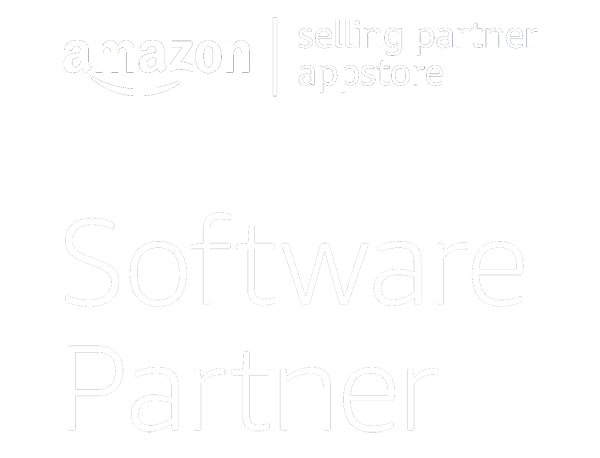Lately, it feels like doom and gloom in the business news cycle. Pundits are predicting a recession. Consumers are tightening budgets. Corporations and retailers are projecting lower revenues. As a result, eCommerce businesses and online marketplace sellers are preparing for a bumpy ride. One of the places you may be considering cutting is marketing campaigns. It’s an understandable reaction, but cutting your marketing investment can be a mistake. It’s important to take a look at all of your eCommerce expenses and see if there are any areas where you can trim the fat.
Sometimes it’s possible to save money even in a critical area of the business if you get creative. In this blog post, we’ll discuss some of the most common ways to reduce costs while preserving your campaigns and product listings
Bank Fees
Here’s a great place to trim your eCommerce expenses, and it’s one that eCommerce business owners don’t often consider. You might be paying the bank too much to hold and move your money. There are all kinds of bank fees that you shouldn’t be paying, including minimum balance fees, maintenance fees, transfer fees, and payment processing fees from your website transactions.
Online sellers often pay their supplier invoices through ACH transfer. Depending on the size of your business, you have dozens or hundreds of ACH payments per month. Tack on a few dollars in fees for each transfer, and suddenly you’re cutting the bottom line by hundreds (if not thousands) of dollars.
The easiest way to reduce bank fees is to find a better bank. Ideally, you’re looking to avoid minimum balance fees, ACH and wire transfer fees, and monthly/maintenance fees.
Shipping and Fulfillment Costs
Your fulfillment strategy is another part of eCommerce expenses that you can audit. Typical costs include storing, packaging, and shipping your products, in addition to labor associated with fulfilling orders yourself.
If you sell products on Amazon, you’re aware that you can use Amazon FBA (fulfillment by Amazon) or FBM (fulfillment by merchant). According to Jungle Scout, 68% of Amazon sellers use FBA only, while 11% use FBM only. Depending on your diversity of product offerings, your most cost effective fulfillment strategy might be a combination.
For example, if the products you sell vary in size and weight, length of sales cycle, and frequency of customer interactions, you might choose FBA for some and FBM for others.
Your eCommerce business is always evolving and looking for an edge. Your fulfillment strategy should follow the same approach. Match the fulfillment method with the product. Evaluate every step of your shipping process for opportunities to save money.
Software and Technology Costs
Every eCommerce business owner pays for software and technology to streamline their operations. Depending on your business, the list of those expenses can be long, fluid, and very difficult to track.
You pay website and hosting costs for an eCommerce store. Marketplaces charge account fees and potentially fees for transaction volume. Perhaps you have software subscriptions to evaluate product trends, inventory management software, customer relationship management tools, software to optimize your listings… the list goes on.

First rule of technology spending: know exactly what you’re paying for and what you use it for. Categorized expenses will help you maintain a pulse. Don’t be ashamed if you catch a few subscriptions that are no longer contributing to your business, but cancel them immediately!
You should always make time to compare alternatives to the technology you use, especially when considering eCommerce expenses, as tech can get pricey quickly. For software vendors that play an integral role in your business, you might consider switching to an annual payment plan rather than a monthly plan if it saves money. You can also look for price breaks through affiliates or other promotions. Don’t be afraid to negotiate with your technology partners for better prices or payment terms, especially if you’re a loyal customer.
Taxes
Are you confident that you’re maximizing your tax deductions? If not, make it a point of emphasis this year to track expenses meticulously. If you haven’t already, open a business bank account to keep your transactions in one place. Better yet, use virtual cards to pay for different categories of expenses. This will help you stay organized for tax purposes, but it will also help you manage recurring expenses such as marketing campaigns. If you need help from an accountant, lean on your professional network to find one who specializes in eCommerce tax deductions.
Returns and Refunds
If you sell online, it’s inevitable that refunds and returns will cut into your profit. Many Amazon sellers wisely provide refunds to unsatisfied customers and let them keep the product. Ultimately, they recognize that a poor review will hurt their business more than the revenue from one sale.
So are we suggesting you provide fewer refunds and risk making customers unhappy? Of course not. But you should reconsider any products you sell that have high return rates. Not only does your business incur the expenses associated with every return, but inferior products will ultimately lead to a poor customer experience, which will have a negative impact on your overall revenue in the long term.

According to Shopify, the return rate on eCommerce sales hovers around 20%. If you sell products where the return/refund rates exceed your average, you may need to reconsider the products. Perhaps you can mitigate the issue with better language or online packaging to set expectations. But chances are, customers are unhappy with the product for a reason you cannot mitigate. Removing the product from your store and investing in another one may come with an upfront cost, but you’ll cut out the constant drumbeat of returns pulling from your bottom line.
This post is not to say you can’t audit and optimize marketing campaigns for your eCommerce business. If the marketing spend is not providing a return, by all means reallocate. But too often, eCommerce businesses react to concerning economic conditions by slashing marketing first. In the competitive world of online selling, those ad campaigns are often the lifeblood that pushes your product in front of your customers. Slashing an effective marketing campaign is a sure-fire way to slash your bottom line, so get creative with your spending before you turn them off.



